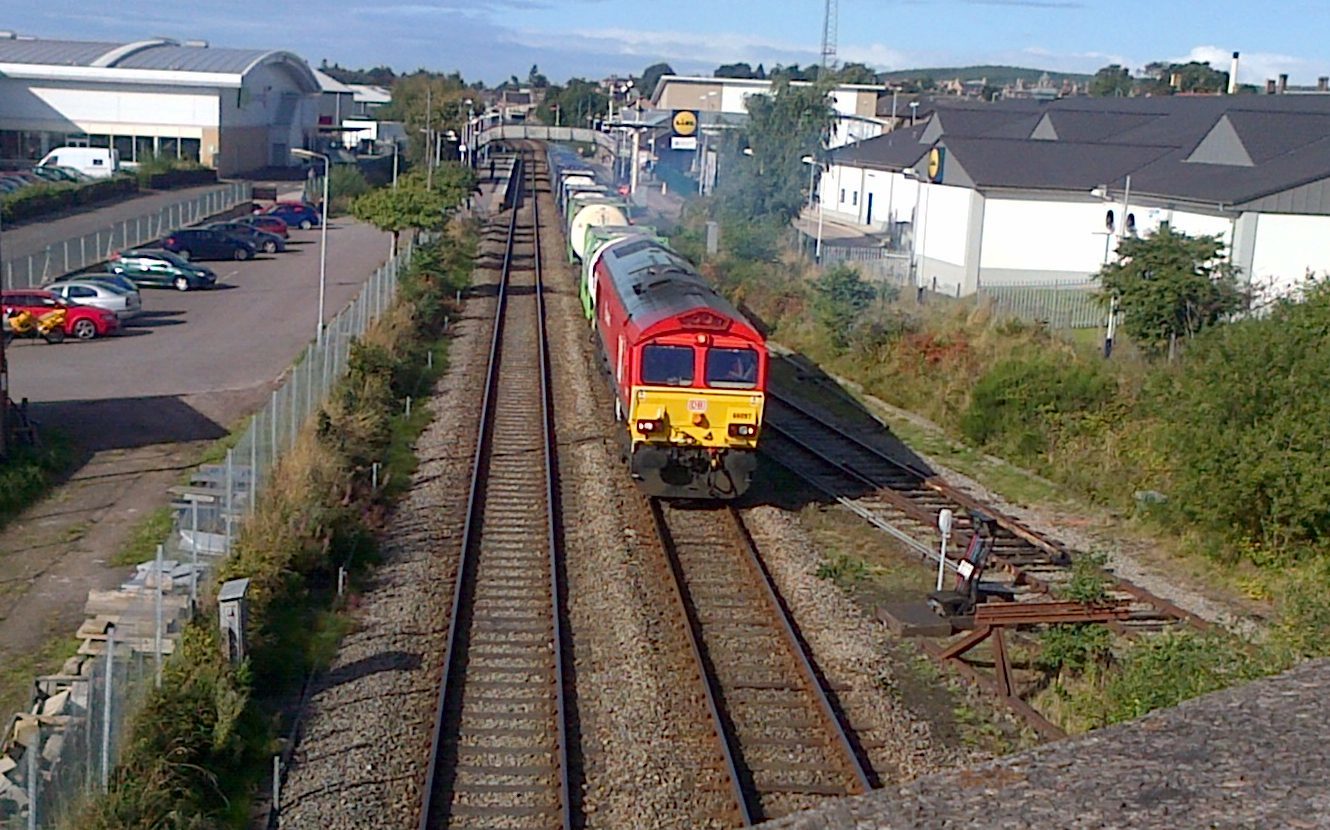Michael Alexander speaks to Douglas Norris, national officer for Scotland with the Chartered Institute for Logistics and Transport about the logistics industry.
What is CILT?
The Chartered Institute of Logistics and Transport in the (UK) is the membership organisation for professionals involved in the movement of goods and people and their associated supply chains, commonly known as Transport & Logistics.
Membership is currently around 18,000 in the UK covering a wide range of professionals in air, road, rail and maritime transport as well as supply chain, active travel and other sectors.
There are also a number of professional grades available for experienced candidates as well as apprentices and students. A wide range of events is arranged throughout the country and there is a special forum for young professionals.
Why do Logistics remain a hidden part of the economy?
Some logistics flows are well known and clearly understood such as deliveries of fuel to filling stations and airports as well as deliveries to shops and supermarkets. Less obvious flows include oil products which move by pipeline and the large volume of goods moved by container, where the shipping company name and not the contents are on display.
Most shipments of food and drink products move around the country and the World without attracting attention or giving any clue to the contents of the truck, container or aircraft. Many of the activities take place overnight and at weekends.
There are also numerous movements of raw materials and, increasingly important, shipments of re cycling products.
Why are Logistics vital in supporting the wider economy?
Around one in 14 of the UK workforce is employed in some aspect of Transport & Logistics, many organisations operate internationally or globally with very complex and integrated supply chains.
Technology has also driven major changes such as “just in time” and next (or even same) day delivery.
Many electrical goods are supplied from countries such as China by rail, sea or air.
Logistics play an essential role in getting goods to market as well as coping with seasonal markets such as Christmas.
Without effective logistics modern day life would be impossible.
Many important commodities such as cement, aluminium and many paper and oil products are sourced from a small number of sites, not always in the UK and reach their markets via an effective supply chain.
Why do companies need internal Logistics people?
Where companies and organisations operate with a range of suppliers and customers in a wide range of locations they require skilled and experienced Logistics people to ensure goods are in the right place at the right time at an affordable cost.
There are many challenges to be overcome in perfecting the optimum Logistics supply chain and then adapting it to business changes, currency fluctuations, fuel prices and balanced flows.
There is also the challenge of inventory holding costs, whether to handle Logistics “in house” or to outsource to a third party such as DHL, UPS or XPO – other options are available.
Until recently supermarkets had large area or national distribution centres feeding mostly large stores.
That has all changed and there are now many small local shops which are in town or city centres and need frequent small deliveries because they have limited storage space.
Many urban areas have restricted access times and strict environmental controls further complicating deliveries.
Smaller vehicles and more deliveries requires more drivers which can drive up costs.
Some retailers like to offer next day delivery as a marketing tool or to remain competitive. Careful analysis is needed to determine the cost and complexity of these offerings and the advanced IT systems needed to support them.
Logistics is a truly dynamic area full of challenges and opportunities allowing individuals to tailor and develop their career to suit changing times.
As a leading professional body in the industry CILT encourages career and professional development, networking and a range of regional events and courses.
What does the future hold for logistics?
In a few months time CILT will celebrates its centenary and continues to adapt to constant changes in Logistics, locally, nationally and globally.
In the last couple of years we have seen direct rail services from China to Europe including the UK for intermodal (container) traffic.
This routing is slower and cheaper than airfreight but quicker than sea freight as well as achieving improved environmental performance.
Scotland can access these services via a number of ports and rail terminals.
A key area for the future of Logistics is reducing dependence on oil based fuels.
We have hydrogen buses running in Aberdeen, electric cars and buses are growing in numbers and some of the key Anglo-Scottish rail routes have used electric traction since the mid 1970’s.
Cars trains, buses and a few ferries feature hybrid power with diesel or petrol as well as electric power.
This is key to improving air quality particularly in urban areas.
Aviation has seen major improvements in fuel efficiency and therefore economy.
A number of the most popular Boeing 737 and Airbus A320 aircraft have a “neo” or new engine option available with reduced emissions.
At the other end of the scale the Boeing 748-8 freighter aircraft is more efficient than its predecessors and in use by some integrated carriers who ship parcels and packages worldwide.
In the UK and Europe most of our trade moves by road or sea, with an important contribution made by rail transport.
In all these areas you will see larger containers, longer trucks (on a trial basis) and larger ships and longer trains.
For the future the key focus will remain satisfying customer needs at optimum cost using a flexible, adaptable skilled workforce with the skills needed to provide a local service.
Expect stricter environmental standards and a greater emphasis on “clean technology”.
New sources and markets will come along with potentially different trading terms.
Rail freight has the potential for increased volumes, particularly in bulk products such as aggregates and cement as well as intermodal (container) traffic by offering a tailored service. Selective infrastructure investment may be needed.
Shopping habits and technology will determine if “on line “shopping continues to grow or if other options are chosen.
Some products may be hired on subscription rather than purchased. In city centres this is already available for cars.
Many under 30’s do not hold driving licences and view “connectivity” as technology rather than physical travel.
Time will tell if this changes or if the number of driving licence holders will decline. Clearly this will have implications for road building and a host of other areas of infrastructure.
The only certainty is change.











